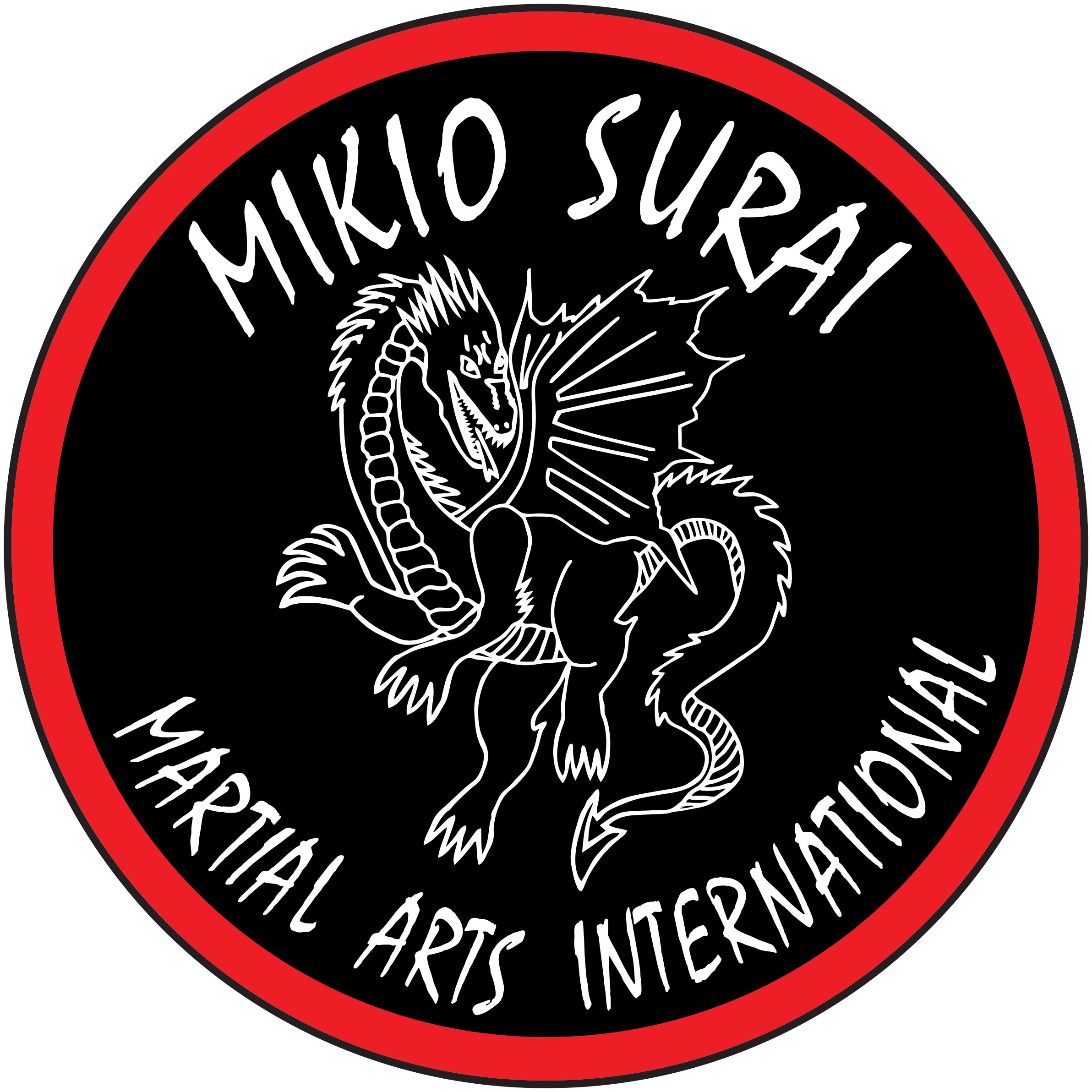What is MIKIO SURAI?
MIKIO means three trees. The “MI” in MIKIO, represents being the best “me” one can be. “KIO” represents Japan/Tokyo considering the foundation of MIKIO SURAI is based on a blend of Japanese martial arts styles. “SURAI” represents a samurai warrior, which is considered one of the best combat warriors that ever lived while maintaining upright moral standards. “Martial” represents laws and being ready for war. “Arts” symbolizes a blank canvas now having an artist ready to paint their expression of MIKIO SURAI. “International” indicates being able to reach the whole world.
The easiest way to describe MIKIO SURAI is just simply saying the words “Martial Arts” as a whole. This is a tactic that Soke Myloreal uses because it is difficult for non-students to grasp the understanding of MIKIO SURAI. It isn't just one style, it is its own umbrella built up of the 8 different black belts in 8 different styles that Soke Myloreal has obtained through his experience and training of over 25 years. Currently, Soke Myloreal is working on obtaining 3 additional black belts in Kuk Sool Won, BKF, and Kung Fu. Soke Myloreal has also earned 4 certifications to teach other styles that do not distribute black belts as they only have different levels of instructors. Nonetheless, it is difficult to give a description of 12 different martial arts styles that he has brought together under the name of MIKIO SURAI.
MIKIO SURAI is composed of the best-of-the-best that Soke Myloreal learned in martial arts, including Taekwondo, Traditional Karate, Jiu-Jitsu, Hapkido, Aikido, Kenpo, Kickboxing, Boxing, Kung Fu, Judo, Muay Thai, Samurai Art/Kendo, Krav Maga, and so much more. Besides taking martial arts, he's also had tactical training dealing with the military, as well as police training, which is included in MIKIO SURAI. Soke Myloreal acknowledges that even after becoming an international and state champion, using martial arts in a competition setting is very different than applying martial arts in real-life situations.
The physical part of martial arts is important, but it is not all that we focus on. Although we are a style that is for the elite, we do practice our techniques at the half and full speed when necessary. We believe the way you train is how you will fight and protect yourself in real-life situations outside of the dojo. We teach our students that we rather you have it and never use it than need it and don’t have it. Taking the time to teach competition fighting is very different than teaching how to use martial arts to protect yourself in the streets where it will matter the most and could save your life and others around you.
Our martial arts program is one of a kind. This program isn’t just about punching and kicking. Soke Myloreal and the MIKIO SURAI black belt instructors encourage, promote, and love the involvement of the teachers, directors, administration, and parents with the children to all work together as a family and a team with one common goal; what’s best for the student. He believes that it really does take a village to encourage the growth of every individual. The founding principles needed for any relationship to grow are honesty, trust, and communication. If you mix those principles with great intention, passion for what you do, and truly have your child’s best interest at heart, then you are able to truly influence a student to start to teach them. You have to reach and understand the student before you can teach the student. One of the first things Soke Myloreal’s program teaches his black belts before going out to instruct is to remember the difference between an A and a C student. Just because the C student has a C, does not mean he or she does not understand what you are teaching. It could simply be because the C student is not interested in what you are teaching and the A student is. He believes that when you teach, make sure you are building a program tailored to each individual student. No one is the same and everyone learns differently. Some students are auditory learners, some are visual learners, and some are kinesthetic learners. For example, if you have a student who loves the color red and trucks, you could easily adapt the things you teach him or her by incorporating fire engines, fire safety, and learning what to do if a fire breaks out. It is all about learning creative ways to educate your student while maintaining the student’s interests. Soke Myloreal always says the best teachers are the child’s peers and people the student respects and trusts.
The program molds the students in the right direction, while the instructor stays humble enough to learn something new every day from his or her students. If a person thinks they are a genius, then they can’t learn anything. Soke Myloreal feels that he is a master student, and will always be able to learn from his mistakes and take criticism to make his class and teaching skills better. He expects his instructors and students to do the same. He also believes it’s very important to be open-minded to change, adaptable and flexible, and understand it’s not about him, but about the children, and he desires for his students to understand this. The resources that are available to the students, while having the coolest environment, gives them the ability to bloom and grow. Anyone can learn martial arts, but in our dojo, it's everything else that matters the most, like morals and values.
This is why our color belt motto is “martial arts is more than fighting, it's a lifestyle.”




